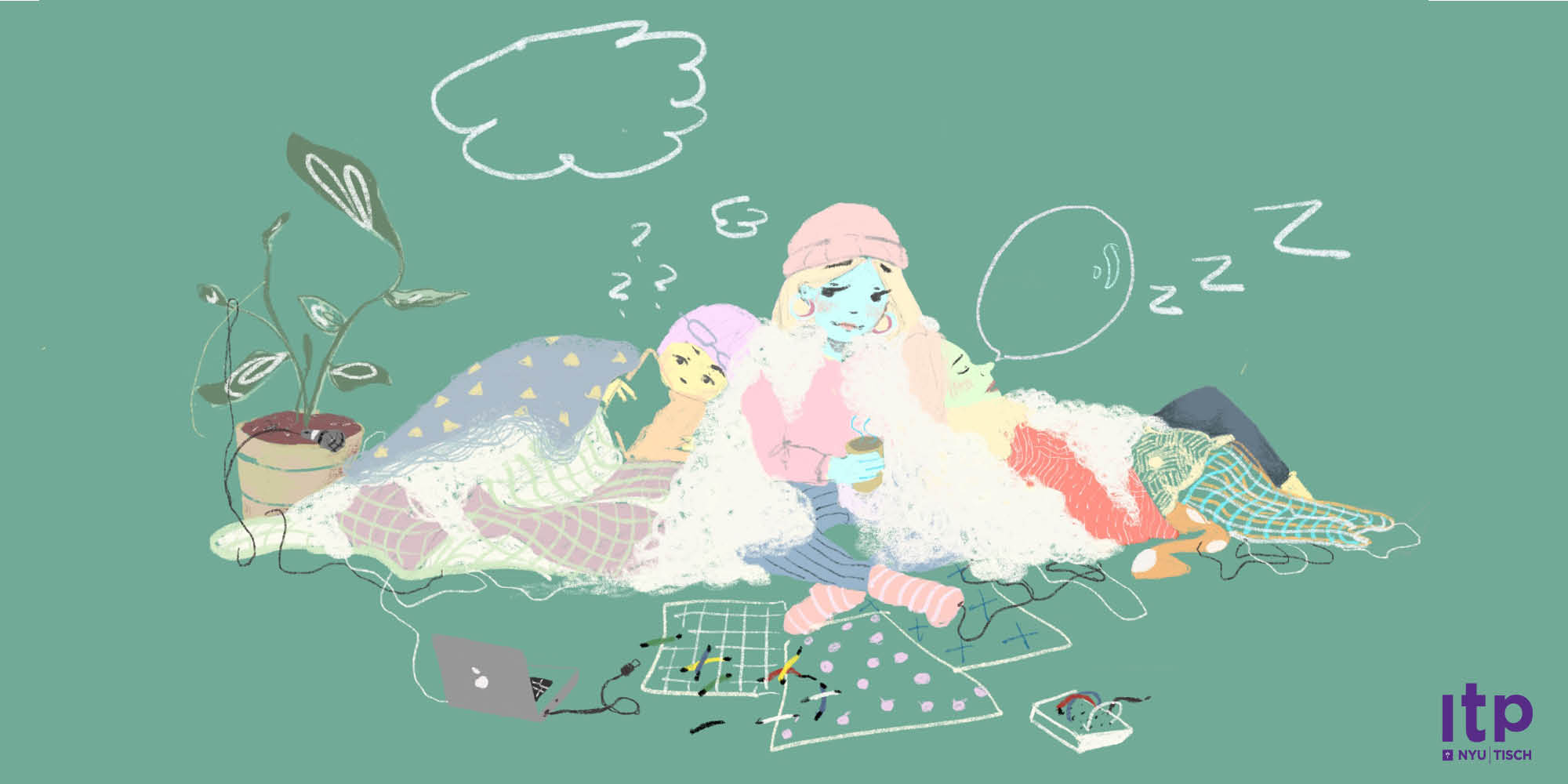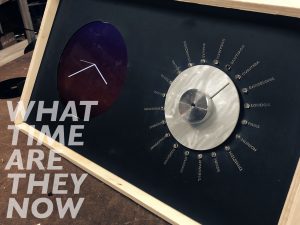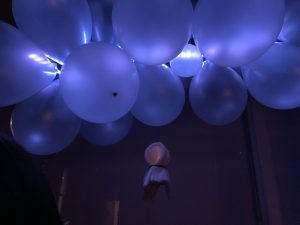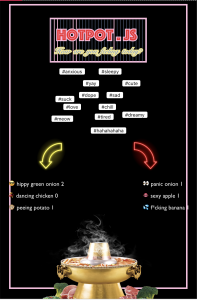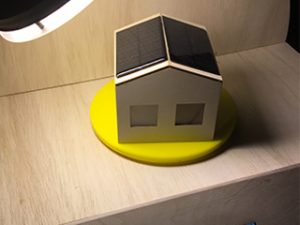Emily Lin
"Power Your Day with Sunlight" is an educational tool that explains how solar panels work and how sunlight is converted into electricity.
https://emilylinprocess.blog/category/final-fall-2018/
Description
We all know what solar panels are but what do we know about how they work? The objectives for “Power Your Day with Sunlight” is to visualize the science of solar cells and better understand this modern technology. By providing the user with a hands on model people will be able to experiment with how solar cells correspond with the sun.
This project is composed of a physical interaction in which the change of the angle of the light, representing the sun and time of day, is reflective of the light generated inside the miniature solar house. Meanwhile, the screen below the house displays an interactive animation of a solar cell diagram that updates in real time based on the amount of light that the solar panels receive. Next to the screen are four buttons that will change to different web pages. The first button will display an intro page, the second one displays the solar cell schematic, the third will allow show the voltage generated by the light in the form of a moving bar graph, the fourth button displays information regarding battery storage.
On the right side, there is an LED powered button icon. When the light is shining on the solar panel, the battery icon will cyclically flash to show that it is storing the solar energy. When the light is turned off, which will automatically happen after the day has ended, the battery will discharge. At that time, the screen will show a page that discusses the current status and challenges with the development of cost-effective batteries.
This addresses the fact that large scale deployment of solar energy depends on effective methods to store the excess sunlight.
Ultimately, this project hopes to show that solar energy, despite its challenges, is sustainable and fascinating.
Process for this project can be seen here: https://emilylinprocess.blog/category/final-fall-2018/
Process videos can be seen here:
Solar Cell Diagram and Light
Switching Pages with Buttons
Drawing with Light
Classes
Introduction to Physical Computing
